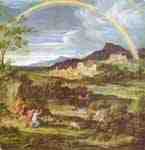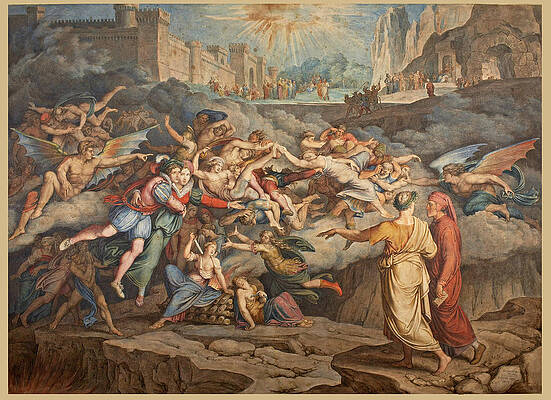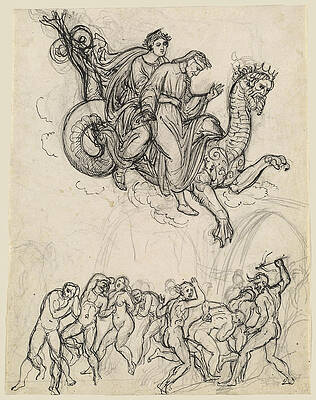Joseph Anton Koch
Paintings
Landscape with Bileam
Heroic Landscape with Rainbow
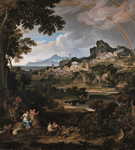
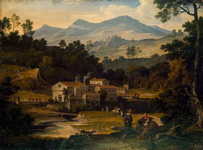
Monastery of San Francesco di Civitella in the Sabine Mountains
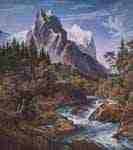
The Wetterhorn from the Rosenlaui
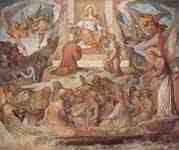
Atonement ship and Purgatory from Purgatorio

Landscape with the peace offerings of Noah
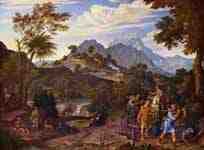
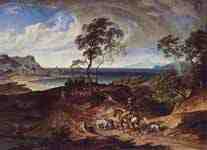

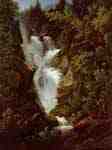
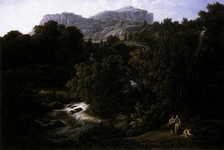
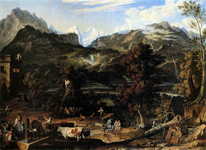
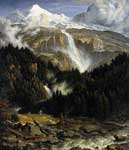
Drawings
Oedipus and Antigone Leave Thebes
Dante and Virgil in the Second Circle in Hell
View of Vietri with Young Country Women Dancing for Shepherds in the Foreground
Paolo da Malatesta and Francesca da Rimini surprised by Gianciotto Malatesta
Dante and Virgil Riding on the Back of Geryon
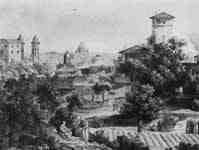
View from S. Isidoro Monastery on Rome
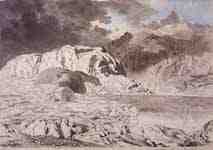
The Hospice of the Grimsel Pass

Landscape near Civitella with hunter
Fine Art Prints | Greeting Cards | Phone Cases | Lifestyle | Face Masks | Men's , Women' Apparel | Home Decor | jigsaw puzzles | Notebooks | Tapestries | ...
Joseph Anton Koch (27 July 1768 – 12 January 1839) was an Austrian painter of Neoclassicism and later the German Romantic movement; he is perhaps the most significant neoclassical landscape painter. The Tyrolese painter was born in Elbigenalp. He started life tending cattle. Through the recommendation of Bishop Umgelder (1785), he received academic training in the Karlsschule Stuttgart, a strict military academy. In 1791, he ran away, and traveled through France and Switzerland. He arrived in Rome in 1795. Koch was close to the painter Asmus Jacob Carstens and carried on Carstens' “heroic” art, at first in a literal manner. He etched the pages of Carstens' Les Argonautes, selon Pindar, Orphée et Apollonius de Rhode (Rome, 1799).
After 1800, Koch developed as a landscape painter. In Rome, he espoused a new type of “heroic” landscape, revising the classical compositions of Poussin and Lorrain with a more rugged, mountainous scenery.
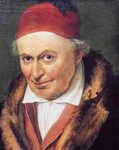
In 1812, forced through inadequate income from his work, or in protest of the French invasion, he went to Vienna, where he worked prolifically. He stayed in Vienna until 1815. During this period, he incorporated more non-classical themes in his work. In Vienna, he was influenced by Friedrich Schlegel and enthusiasts of old German art. In response, his style became harsher.
Koch Landscape with Bileam 1834
Koch returned to Rome, and became a conspicuous figure in the German artists' colony there. He painted, among other works, the four frescoes in the Dante Room of the Villa Massimi (1824–29).His presence and personality had considerable influence among the younger generation in the art life of Rome, and his new approach had a wide influence on German landscape painters who visited Rome. He wrote Moderne Kunstchronik oder die rumfordische Suppe gekocht und geschrieben von J. A. Koch (Stuttgart, 1834) which was directed humorously against unjustifiable criticism and false connoisseurship.
Koch's last years were spent in great poverty. He died in Rome,where he was buried in the Teutonic Cemetery, located next to St. Peter's Basilica within Vatican City.
Works
Landscape with Noah, ca. 1803 - oil on canvas [86 × 116 cm] (Pinakothek, Munich)
Schmadribach Falls in the Lauterbach Valley, 1811
Noah's Sacrifice, 1813
Grimsel Pass, 1813
View in the Sabine Mountains, 1813
Monastery of San Francesco di Civitella, 1814
Landscape with Ruth and Boaz, ca. 1823/25 - oil on canvas
View of Nauplia, 1830
View Near Subiaco
Macbeth and the Witches
He etched 20 Italian landscapes and a large sheet representing The Oath of the French at Millesimo; 14 pages after Dante, adding later another 30 pages (published Vicenza, 1904), and 36 pages after Ossian. He contributed American landscape scenes to the works of Alexander von Humboldt (1805).
References
Vaughan, William (1980). German Romantic Painting. New Haven and London: Yale University Press; pp. 37–38. ISBN 0-300-02387-1
Attribution
This article incorporates text from a publication now in the public domain: Rines, George Edwin, ed. (1920). "Koch, Joseph Anton". Encyclopedia Americana.
This article incorporates text from a publication now in the public domain: Gilman, D. C.; Thurston, H. T.; Moore, F., eds. (1905). "Koch, Joseph Anton". New International Encyclopedia (1st ed.). New York: Dodd, Mead.
Further reading
Strauss, Kleine Schriften (Bonn, 1877)
Frimmel, in Dohme, Kunst und Künstler des neunzehnten Jahrhunderts (Leipzig, 1884)
---
Fine Art Prints | Greeting Cards | Phone Cases | Lifestyle | Face Masks | Men's , Women' Apparel | Home Decor | jigsaw puzzles | Notebooks | Tapestries | ...
---
Artist
A - B - C - D - E - F - G - H - I - J - K - L - M -
N - O - P - Q - R - S - T - U - V - W - X - Y - Z
Retrieved from "http://en.wikipedia.org/"
All text is available under the terms of the GNU Free Documentation License




